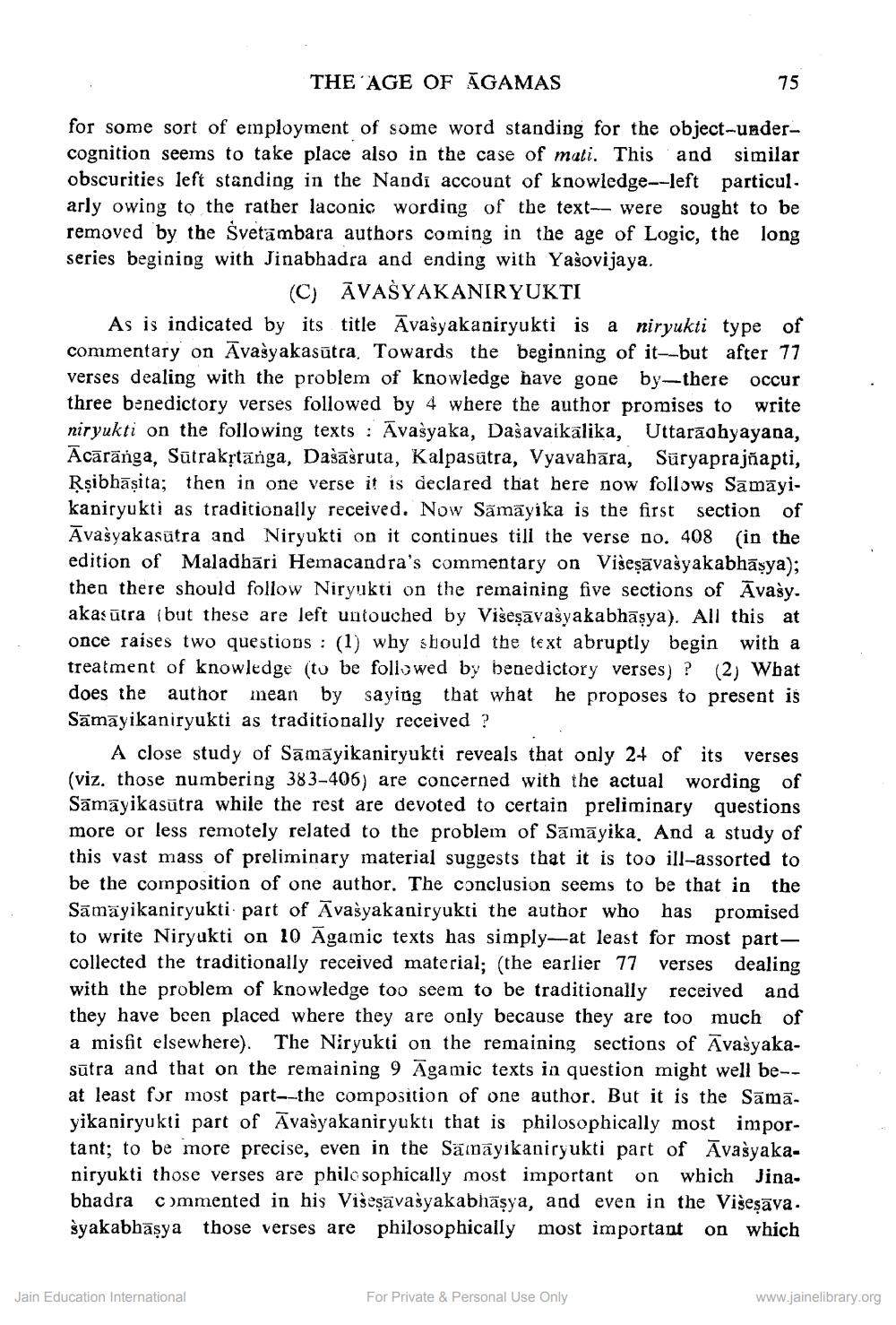________________
THE AGE OF AGAMAS
75
for some sort of employment of some word standing for the object-undercognition seems to take place also in the case of mati. This and similar obscurities left standing in the Nandi account of knowledge--left particul. arly owing to the rather laconic wording of the text-- were sought to be removed by the Svetambara authors coming in the age of Logic, the long series begining with Jinabhadra and ending with Yašovijaya.
(C) ĀVAŠYAKANIRYUKTI As is indicated by its title Avašyakaniryukti is a niryukti type of commentary on Āvašyakasūtra. Towards the beginning of it--but after 77 verses dealing with the problem of knowledge have gone by-there occur three benedictory verses followed by 4 where the author promises to write niryukti on the following texts : Avasyaka, Dašavaikalika, Uttarādhyayana, Ācārānga, Sütrakstānga, Dašāšruta, Kalpasūtra, Vyavahāra, Süryaprajñapti, Rşibhāșita; then in one verse it is declared that here now follows Sāmāyikaniryukti as traditionally received. Now Sāmāyika is the first section of Āvašyakasutra and Niryukti on it continues till the verse no. 408 (in the edition of Maladhāri Hemacandra's commentary on Višeşāvašyakabhāșya); then there should follow Niryukti on the remaining five sections of Āvasy. akasutra (but these are left untouched by Višeşāvasyakabhāsya). All this at once raises two questions : (1) why should the text abruptly begin with a treatment of knowledge to be followed by benedictory verses) ? (2) What does the author mean by saying that what he proposes to present is Sāmāyikaniryukti as traditionally received ?
A close study of Sāmāyikaniryukti reveals that only 24 of its verses (viz. those numbering 383-406) are concerned with the actual wording of Sāmāyikasūtra while the rest are devoted to certain preliminary questions
or less remotely related to the problem of Sāmāyika. And a study of this vast mass of preliminary material suggests that it is too ill-assorted to be the composition of one author. The conclusion seems to be that in the
aniryukti part of Avasyakaniryukti the author who has promised to write Niryukti on 10 Agamic texts has simply--at least for most partcollected the traditionally received material; (the earlier 77 verses dealing with the problem of knowledge too seem to be traditionally received and they have been placed where they are only because they are too much of a misfit elsewhere). The Niryukti on the remaining sections of Avasyakasūtra and that on the remaining 9 Āgamic texts in question might well be-- at least for most part--the composition of one author. But it is the Sāma. yikaniryukti part of Āvasyakaniryukti that is philosophically most important; to be more precise, even in the Samāyikaniryukti part of Avašyaka. niryukti those verses are philosophically most important on which Jina. bhadra commented in his Višeşāvašyakabhāşya, and even in the Višeşāva. syakabhāşya those verses are philosophically most important on which
Jain Education International
For Private & Personal Use Only
www.jainelibrary.org




